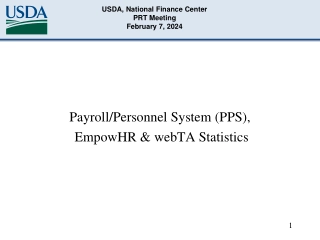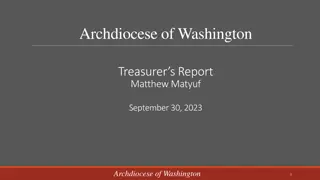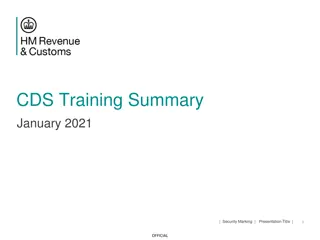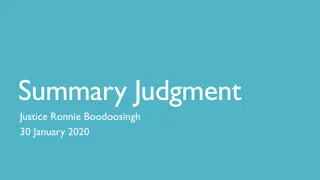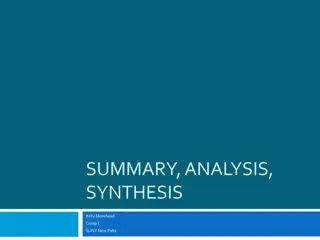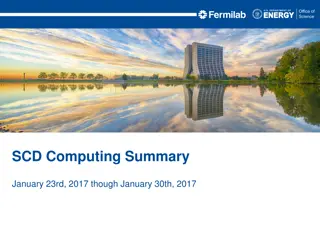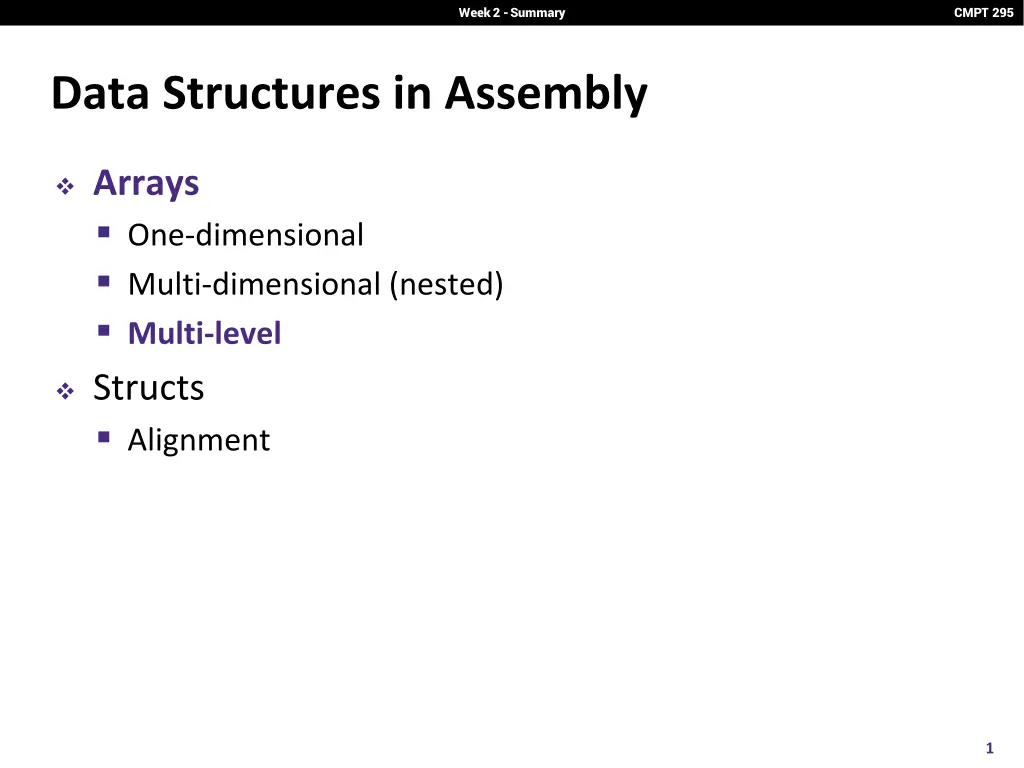
Understanding Data Structures in Assembly Week 2 Summary
Delve into the principles of data structures in assembly, focusing on arrays, multi-dimensional arrays, alignment, structs, and more. Learn about array access, typedef, nested arrays, and two-dimensional arrays.
Download Presentation

Please find below an Image/Link to download the presentation.
The content on the website is provided AS IS for your information and personal use only. It may not be sold, licensed, or shared on other websites without obtaining consent from the author. If you encounter any issues during the download, it is possible that the publisher has removed the file from their server.
You are allowed to download the files provided on this website for personal or commercial use, subject to the condition that they are used lawfully. All files are the property of their respective owners.
The content on the website is provided AS IS for your information and personal use only. It may not be sold, licensed, or shared on other websites without obtaining consent from the author.
E N D
Presentation Transcript
Week 2 -Summary CMPT 295 Data Structures in Assembly Arrays One-dimensional Multi-dimensional (nested) Multi-level Structs Alignment 1
Week 2 - Summary CMPT 295 Array Access Basic Principle T A[N]; array of data type T and length N Identifier A returns address of array (type T*) int x[5]; 3 7 1 9 5 a a+4 a+8 a+12 a+16 a+20 Value 5 a a + 4 a + 8 ?? (whatever s in memory at addr x+20) 7 a + 4*i Reference Type x[4] x x+1 &x[2] x[5] *(x+1) x+i int int* int* int* int int int* 2
Week 2 - Summary CMPT 295 typedef int zip_dig[5]; Referencing Examples zip_dig cmu; 1 5 2 1 3 16 20 24 28 32 36 zip_dig sfu; 9 8 1 9 5 36 40 44 48 52 56 zip_dig ucb; 9 4 7 2 0 56 60 64 68 72 76 Reference sfu[3] sfu[6] sfu[-1] cmu[15] Address 36 + 4* 3 = 48 36 + 4* 6 = 60 36 + 4*-1 = 32 16 + 4*15 = 76 Value 9 4 3 ?? Guaranteed? Yes No No No No bounds checking Example arrays happened to be allocated in successive 20 byte blocks Not guaranteed to happen in general 3
Week 2 - Summary CMPT 295 typedef int zip_dig[5]; Nested Array Example zip_dig sea[4] = {{ 9, 8, 1, 9, 5 }, { 9, 8, 1, 0, 5 }, { 9, 8, 1, 0, 3 }, { 9, 8, 1, 1, 5 }}; Remember, T A[N] is an array with elements of type T, with length N What is the layout in memory? same as: int sea[4][5]; 4
Week 2 - Summary CMPT 295 typedef int zip_dig[5]; Nested Array Example zip_dig sea[4] = {{ 9, 8, 1, 9, 5 }, { 9, 8, 1, 0, 5 }, { 9, 8, 1, 0, 3 }, { 9, 8, 1, 1, 5 }}; Remember, T A[N] is an array with elements of type T, with length N sea[3][2]; Row 2 Row 3 Row 0 Row 1 9 8 1 9 5 9 8 1 0 5 9 8 1 0 3 9 8 1 1 5 76 96 116 136 156 Row-major ordering of all elements Elements in the same row are contiguous Guaranteed (in C) 5
Week 2 - Summary CMPT 295 Two-Dimensional (Nested) Arrays Declaration: T A[R][C]; 2D array of data type T R rows, C columns Each element requires sizeof(T) bytes A[0][0] A[0][C-1] A[R-1][0] A[R-1][C-1] Array size: R*C*sizeof(T) bytes Arrangement: row-major ordering int A[R][C]; A A A A A A [0] [0] [0] [C-1] [1] [0] [1] [C-1] [R-1] [0] [R-1] [C-1] 4*R*C bytes 6
Week 2 - Summary CMPT 295 Multi-Level Array Example Multi-Level Array Declaration(s): int cmu[5] = { 1, 5, 2, 1, 3 }; int sfu[5] = { 9, 8, 1, 9, 5 }; int ucb[5] = { 9, 4, 7, 2, 0 }; int* univ[3] = {sfu, cmu, ucb}; Is a multi-level array the same thing as a 2D array? NO 2D Array Declaration: zip_dig univ2D[3] = { { 9, 8, 1, 9, 5 }, { 1, 5, 2, 1, 3 }, { 9, 4, 7, 2, 0 } }; One array declaration = one contiguous block of memory 7
Week 2 - Summary CMPT 295 Multi-Level Referencing Examples cmu 1 5 2 1 3 univ 16 20 24 28 32 36 sfu 36 160 9 8 1 9 5 16 168 176 36 40 44 48 52 56 ucb 60 9 4 7 2 0 60 64 68 72 76 80 Reference univ[2][3] univ[1][5] univ[2][-2] univ[3][-1] univ[1][12] C code does not do any bounds checking Location of each lower-level array in memory is not guaranteed Address Value Guaranteed? 8
Week 2 - Summary CMPT 295 Array Element Accesses Nested array Multi-level array int get_sea_digit (int index, int digit) { return sea[index][digit]; } int get_univ_digit (int index, int digit) { return univ[index][digit]; } cmu 1 5 2 1 3 univ 16 20 24 28 32 36 36 sfu 160 9 8 1 9 5 16 168 36 40 44 48 52 56 ucb 60 176 9 4 7 2 0 60 64 68 72 76 80 Access looksthe same, but it isn t: Mem[Mem[univ+8*index]+4*digit] Mem[sea+20*index+4*digit] 9
Week 2 - Summary CMPT 295 C Structure Representation structrec { int a[4]; long i; structrec *next; }; r i next 24 a 0 32 16 struct rec *r; Structure represented as block of memory Big enough to hold all of the fields Fields ordered according to declaration order Even if another ordering would be more compact Compiler determines overall size + positions of fields Machine-level program has no understanding of the structures in the source code 10
Week 2 - Summary CMPT 295 Accessing a Structure Member structrec { int a[4]; long i; structrec *next; }; r r->i i next 24 a 0 32 16 struct rec *r; long get_i(structrec *r) { return r->i; } Compiler knows the offset of each member within a struct Compute as *(r+offset) add a0, a1, 16 # Coming up in Week 3 ret Referring to absolute offset, so no pointer arithmetic 11
Week 2 - Summary CMPT 295 Structures & Alignment structS1 { char c; int i[2]; double v; } *p; Unaligned Data c i[0] i[1] v p p+1 p+5 p+9 p+17 Aligned Data Primitive data type requires ? bytes Address must be multiple of ? c i[0] i[1] v 3 bytes 4 bytes p+0 p+4 p+8 p+16 p+24 Multiple of 4 Multiple of 8 Multiple of 8 Multiple of 8 internal fragmentation 12
Week 2 - Summary CMPT 295 Nested Struct structfoo { long a; long b; struct barmy_bar; }; &f->my_bar &f->my_bar.y struct bar { long x; long y; }; a b x y 8 24 32 0 16 struct foo*f; 13
Week 2 - Summary CMPT 295 Nested Struct structfoo { long a; long b; struct foomy_foo; }; a b ????????? 8 0 16 14
Week 2 - Summary CMPT 295 Arrays of Structures structS2 { double v; int i[2]; char c; } a[10]; Overall structure length multiple of ???? Satisfy alignment requirement for every element in array a[0] a[1] a[2] a+0 a+24 a+48 a+72 v i[0] i[1] c 7 bytes a+24 a+32 a+40 a+48 external fragmentation 15
Week 2 - Summary CMPT 295 Sparse Arrays (Array of Structs) Arrays Array of structures (non zeros) struct coo { int row; int col; int val; } // each non-zero int nnz // number of non zeros struct coo_array[nnz] // Array of non zeros for i = 0 to nnz int* base = &coo[i] int r = *base int c = *(base+1) int val = *(base+2) 16
Week 2 - Summary CMPT 295 Sparse Arrays (Structs of Arrays) int row[nnz] int col[nnz] int val[nnz] for i = 0 to nnz int r = row[i] int c = col[i] int val = val[i] 17
Week 2 - Summary CMPT 295 Multiple Ways to Store Program Data 18
Week 2 - Summary CMPT 295 Multiple Ways to Store Program Data Static global data Fixed size at compile-time Entire lifetime of the program (loaded from executable) Portion is read-only (e.g. string literals) int array[1024]; void foo(int n) { int tmp; int local_array[n]; int* dyn = (int*)malloc(n*sizeof(int)); } Stack-allocated data Local/temporary variables Can be dynamically sized (in some versions of C) Known lifetime (deallocated on return) Dynamic (heap) data Size known only at runtime (i.e. based on user-input) Lifetime known only at runtime (long-lived data structures) 19
Week 2 - Summary CMPT 295 C Memory Layout Program s address space contains 4 regions: Stack: local variables, grows downward Heap: space requested via malloc() and used with pointers; resizes dynamically, grows upward Static Data: global and static variables, does not grow or shrink Code: loaded when program starts, does not change ~ FFFF FFFFhex stack heap static data code ~ 0hex OS prevents accesses between stack and heap (via virtual memory) 20
Week 2 - Summary CMPT 295 The Stack Function call: returns: Function Each stack frame is a contiguous block of memory holding the local variables of a single procedure A stack frame includes: Location of caller function Function arguments Space for local variables Stack pointer (SP) tells where lowest (current) stack frame is When procedure ends, stack pointer is moved back (but data remains (garbage!)); frees memory for future stack frames; frame frame frame SP frame SP 21
Week 2 - Summary CMPT 295 22
Week 2 - Summary CMPT 295 Bit-Level Operations in C & (AND), | (OR), ^ (XOR), ~ (NOT) View arguments as bit vectors, apply operations bitwise Apply to any integral data type long, int, short, char, unsigned Examples with char a, b, c; a = (char) 0x41; b = ~a; a = (char) 0x69; b = (char) 0x55; c = a & b; a = (char) 0x41; b = a; c = a ^ b; // 0x41->0b 0100 0001 // 0b ->0x // 0x69->0b 0110 1001 // 0x55->0b 0101 0101 // 0b ->0x // 0x41->0b 0100 0001 // 0b 0100 0001 // 0b ->0x 23
Week 2 - Summary CMPT 295 Intuition for logical operators Operator & 1 : Copy | 1 : Set & 0 : Reset | 0 : Copy ^ 1 : Flip ^ 0 : Copy Input 1001 & 1111 1001 | 1111 1001 |0000 1001 | 0000 1001 ^ 1111 1001 ^ 0000 Output 1001 1111 0000 1001 0110 1001 e.g., extract bits at position 3 and 2 from number number & 1100 - Copy positions 3 and 2. Reset positions 1 and 0 1001 & 1100 = 1000 1000 --10 24
Week 2 - Summary CMPT 295 Shift Operations (also watch Lab 3 video) x 0010 0010 x<<3 0001 0000 Left shift (x<<n) Fill with 0s on right logical: x>>2 0000 1000 arithmetic: x>>2 0000 1000 Right shift (x>>n) Logical shift (for unsigned values) x 1010 0010 x<<3 0001 0000 Fill with 0s on left Arithmetic shift (for signed values) logical: x>>2 0010 1000 arithmetic: x>>2 1110 1000 Replicate most significant bit on left Notes: Shifts by n<0 or n w (bit width of x) are undefined In C: behavior of >> is determined by compiler depends on data type of x (signed/unsigned) In Java: logical shift is >>> and arithmetic shift is >> 25
Week 2 - Summary CMPT 295 Integers Sign and unsigned variables in C Bit pattern remains the same, just interpreted differently Strange things can happen with our arithmetic when we convert/cast between sign and unsigned numbers Type of variables affects behavior of operators (shifting, comparison) We can only represent so many numbers in ? bits When we exceed the limits, arithmetic overflow occurs Sign extension tries to preserve value when expanding Shifting is a useful bitwise operator Right shifting can be arithmetic (sign) or logical (0) Can be used in multiplication with constant or bit masking 26
Week 2 - Summary CMPT 295 Encoding Integers The hardware (and C) supports two flavors of integers unsigned only the non-negatives signed both negatives and non-negatives Cannot represent all integers with ? bits Only 2? distinct bit patterns Unsigned values: Signed values: 2(? 1) 0 2(? 1) 1 0 ... 2? 1 Example: 8-bit integers (e.g.char) - + 128 ?? ? 0 ? +128 +?? ? +256 +?? 27
Week 2 - Summary CMPT 295 Sign and Magnitude MSB is the sign bit, rest of the bits are magnitude Drawbacks? 7 + 0 15 0 6 + 1 14 1 1111 0000 1111 0000 1110 1101 0001 0010 1110 0001 5 + 2 13 2 1101 0010 4 + 3 12 3 1100 0011 1100 0011 Sign and Magnitud e Unsigned 1011 0100 1011 1010 10 0100 0101 3 + 4 11 4 1010 1001 0101 2 + 5 5 0110 1001 0110 1000 0111 1000 0111 1 + 6 9 6 0 + 7 8 7 28
Week 2 - Summary CMPT 295 Sign and Magnitude MSB is the sign bit, rest of the bits are magnitude Drawbacks: Two representations of 0 (bad for checking equality) Arithmetic is cumbersome Example: 4-3 != 4+(-3) 7 + 0 6 + 1 1111 0000 1110 1101 0001 0010 5 + 2 4 0100 - 0011 0001 4 0100 + 1011 1111 4 + 3 1100 0011 - 3 1 + -3 -7 Sign and Magnitud e 1011 0100 3 + 4 1010 1001 0101 Negatives increment in wrong direction! 2 + 5 0110 1000 0111 1 + 6 0 + 7 29
Week 2 - Summary CMPT 295 Why Two s Complement is So Great Roughly same number of (+) and ( ) numbers Positive number encodings match unsigned Simple arithmetic (x + -y = x y) Single zero 1 + 0 All zeros encoding = 0 2 + 1 1111 0000 1110 1101 0001 0010 3 + 2 Simple negation procedure: Get negative representation of any integer by taking bitwise complement and then adding one! ( ~x + 1 == -x ) 4 + 3 1100 0011 Two s Complem ent 1011 0100 5 + 4 1010 1001 0101 6 + 5 0110 1000 0111 7 + 6 8 + 7 30
Week 2 - Summary CMPT 295 Sign Extension Task: Given a ?-bit signed integer X, convert it to ?+?-bit signed integer X with the same value Rule: Add ? copies of sign bit Let ?? be the ?-th digit of X in binary X = ?? 1, ,?? 1,?? 1,?? 2, ,?1,?0 ? copies of MSB original X ? X ? ? X 31


